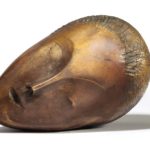WASHINGTON, D.C.- The Martian moons, Phobos and Deimos, may have been the result of a giant impact that sent rocks and debris into orbit around Mars, instead of asteroids that were captured by the planet’s gravity as previously thought. After going into orbit, the material from the giant impact aggregated and formed into small, low-mass moons. This collision could also account for why Mars spins on its axis. This theory is presented in an article by Smithsonian scientist Robert Craddock at the Center for Earth and Planetary Studies to be published in the Icarus International Journal of Solar System Studies. In recent years a number of separate observations suggest that the Martian satellites were the result of giant impact. Similar to the Earth–Moon system, Mars has too much angular momentum; in both cases a giant
Smithsonian Scientist Sheds Light on Origin of Martian Moons, Phobos and Deimos
Back To Top







